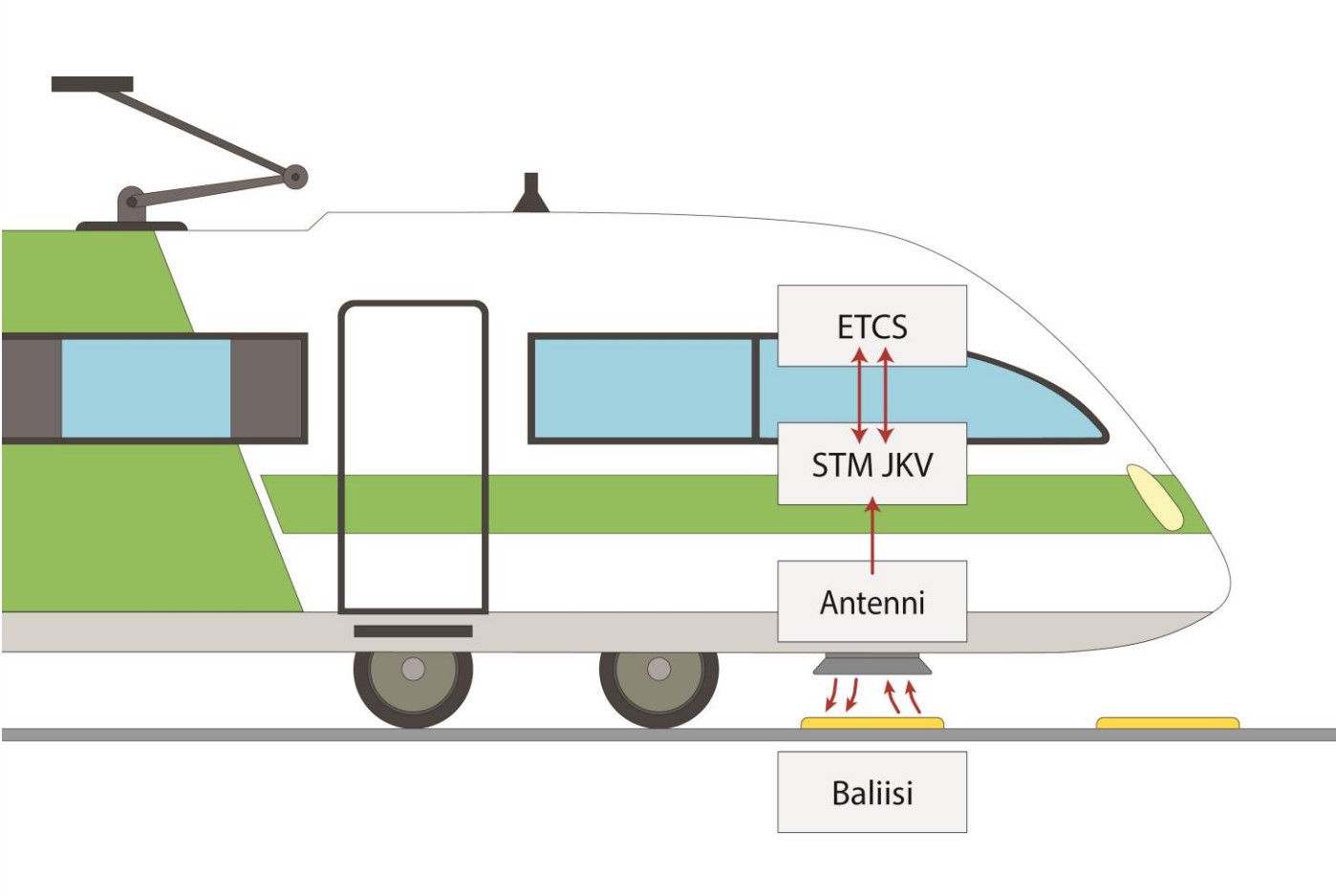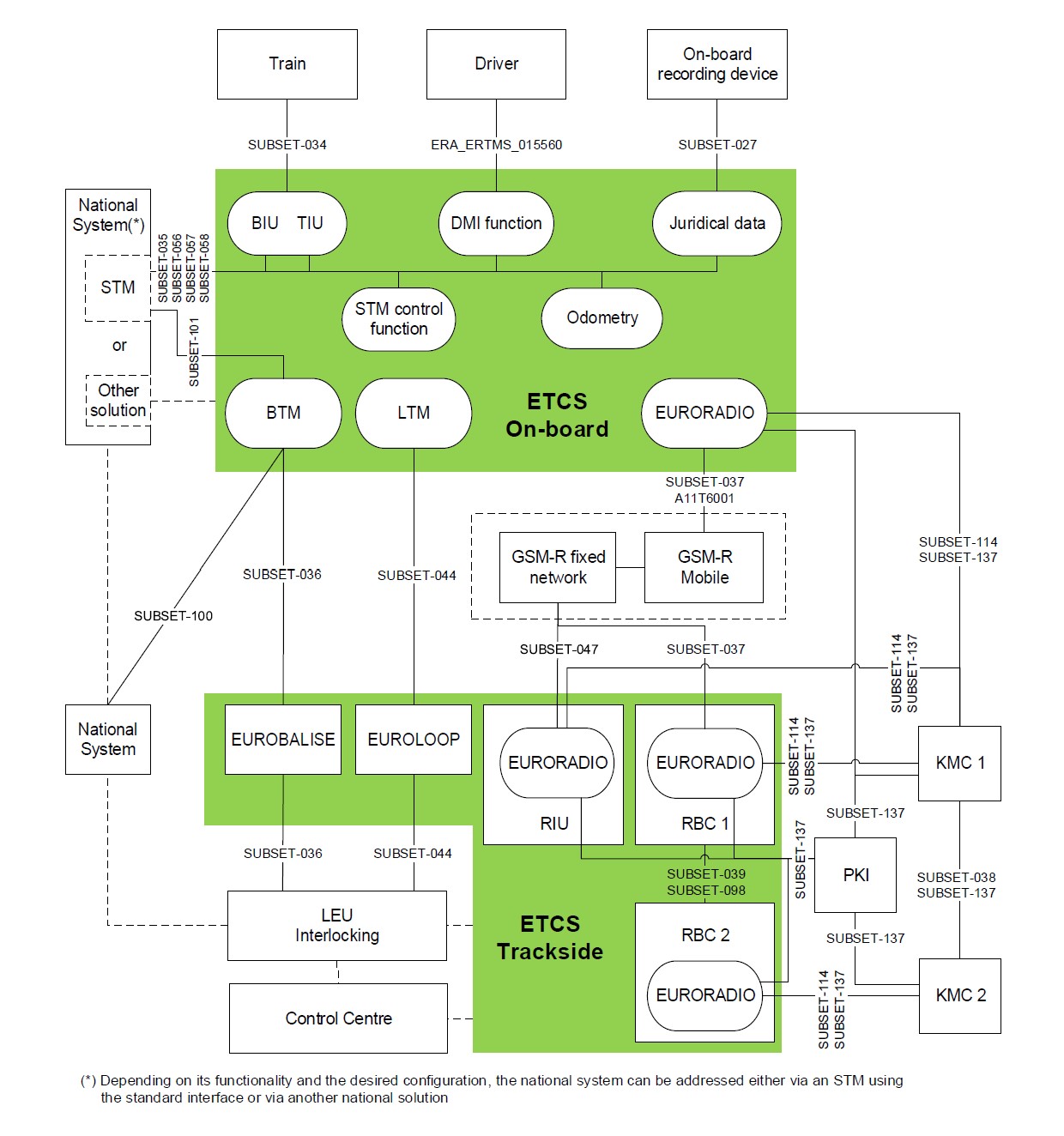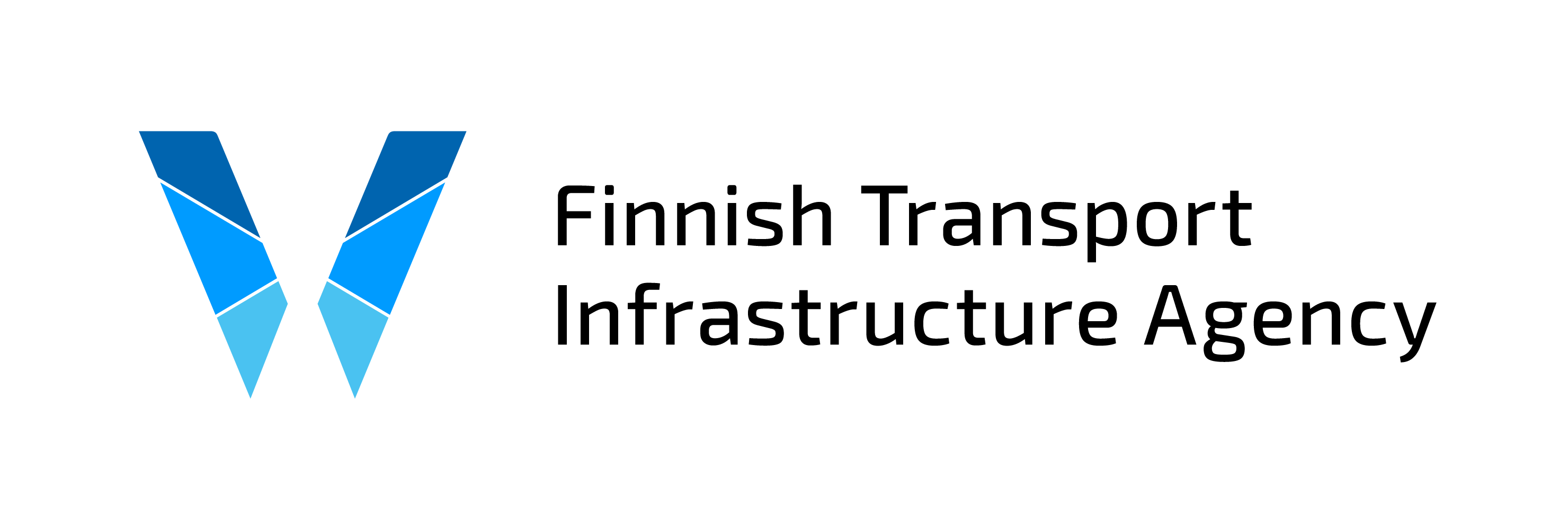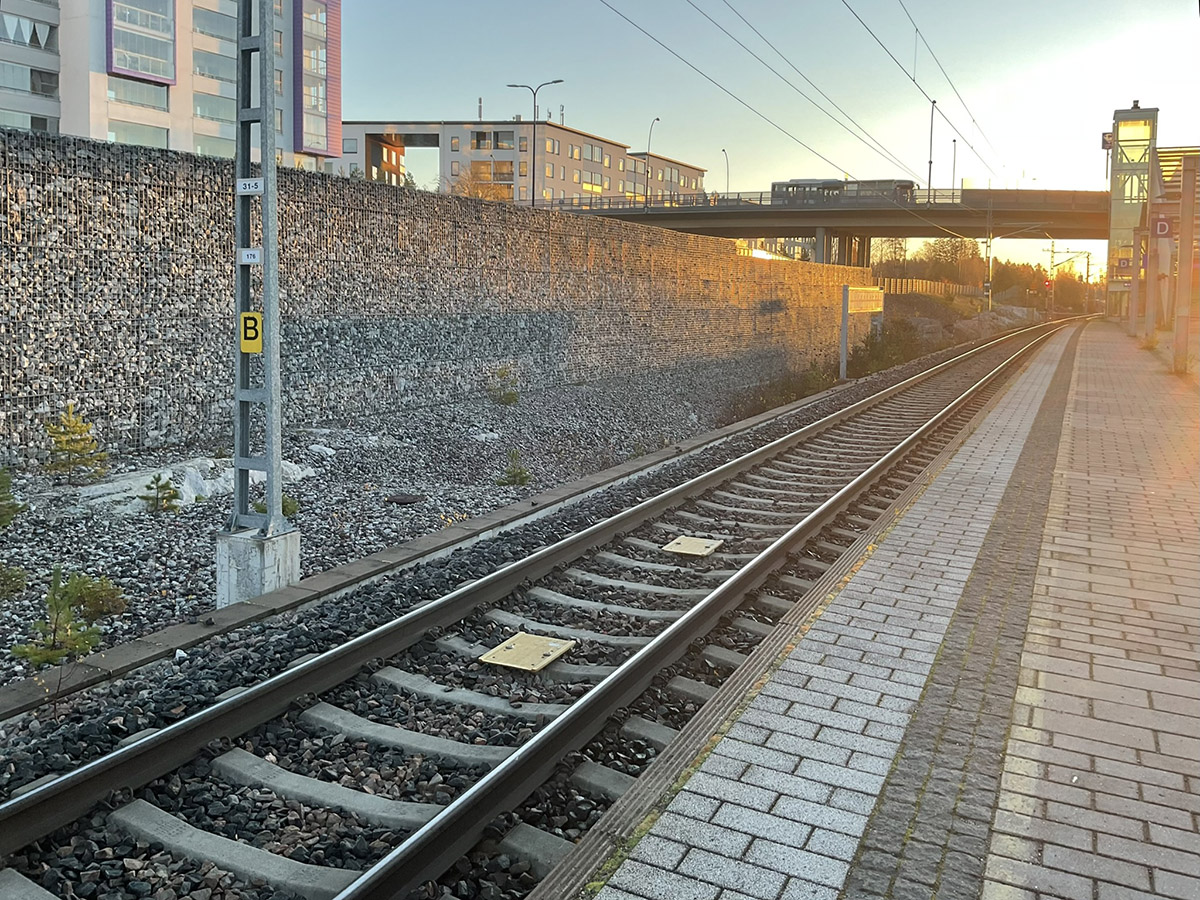Picture 1: Balises installed on railway sleepers, Leinelä railway station, Vantaa (photo by Aki Härkönen).
Train control systems aim to prevent train accidents
Railway signalling technology and its train control system is visible to passengers waiting for the train on the station platform as yellow or gray plastic plates installed on the sleepers, so-called balises, are mounted in pairs on the track. A train passenger can also rarely experience sudden braking when the on-board unit of the train control system slows down the train in accordance with the permitted speed limit. The train control system is a system with trackside and on-board equipment, which together ensure train safety, mostly unnoticeably to passengers.
The current Finnish train control system (JKV, “junakulunvalvonta”) was built comprehensively on our rail network between 1995 and 2009. However, before the financing decision that enabled more extensive construction, two serious accidents occurred in Jokela (1996) and Jyväskylä (1998), in which train passengers died. According to the accident investigation, a train control system would probably have prevented these accidents.
The purpose of train traffic control is to increase safety and reduce the impact of human errors through automation. The train control unit installed on-board on the locomotive automatically reads the speed limit information stored in the balises, obtained from signals or other track speed limits. If necessary, the on-board unit intervenes in the running of the train and forces it to brake, if the driver does not follow the speed limits of the track or the stop signal given by the light signal.
The train control system thus improves train safety by preventing negligence due to human error and by ensuring the compliance with speed limits. If railway signalling equipment act as the 'belt' of train safety, then the train control system is its 'braces'. Together, they provide even more comprehensive safety on the railways.
A train control system (Automatic Train Control, ATC) based on technology from the 1970s has been built on the railways of Norway and Sweden, the background of which is the railway signalling technology developed by Swedish Ericsson and a few other companies, whose trackside equipment is collectively called as KER balises. In this technology, the messages sent by the balises installed on the track are remotely read into the locomotive on-board unit, so that the on-board unit receives information about, for example, speed limits.
An updated version of this system from the 1990s has been introduced in Finland. A newer but similar balise-based technology enables longer messages, through which a greater amount of information can be transmitted with the help of balises.
The Finnish train control system (JKV) was originally based on the EBICAB 900 product family of the Alstom Transport company in the 1990s. Since the 2000s, the gray JKV balises of the Hitachi Rail company have also been used in Finland. The neutral international name of this technology, independent of the equipment supplier, is ATP-VR/RHK (Automatic Train Protection, VR or Finnish State Railways, and RHK or Finnish Rail Administration). The system utilizes reliable technology based on KER balises, which is also applied to European, interoperable Eurobalises used by the European Train Control System ETCS.
Specific Transmission module STM and the Nordic cooperation
The European Union's transport policy aims to move to an interoperable European Train Control System (ETCS), which is also called a class A system. National, mutually incompatible solutions are classified as class B systems. The need to move to a harmonized European system was already defined in December 1989, when European transport ministers gathered after the fall of the Berlin Wall to aim for smoother cross-border rail traffic.
More than 20 years ago, the Nordic railway authorities started discussions about the introduction of the future European Rail Traffic Management System (ERTMS) and the European Train Control System (ETCS) included in it. In the discussions, it was considered how the transition to the harmonized train control system driven by the EU transport policy would be best implemented. During the transition period, the railway networks have either national systems or a harmonized European system in use at the same time on their different railway sections.
At the beginning of the 2000s, the Nordic rail infrastructure management authorities were preparing to move from national systems to interoperable European Train Control System (class A). Because of this, Norway, Sweden and Finland organized a joint competitive tendering to find a solution that would enable dual equipment on on-board of locomotives with both national and European systems. In this way, the rail infrastructure management authorities could avoid maintaining two different train control systems in trackside during the transition period.
Similarly, the railway undertakings would get a ready-made, reliable solution with which railway traffic can be carried out smoothly over the level transitions of two different train control systems. The solution is also overall economically advantageous for railway undertakings.
Dual equipment on-board the locomotives, not in the trackside equipment, is based on the Specific Transmission Module STM, which as a national on-board system is connected to the ERTMS/ETCS on-board unit and thus enables the operation of train control systems in both the national and European systems. The competitive bidding was won by Hitachi Rail STS Sweden AB from Stockholm, which developed according to the contracts two STM product versions: STM ATC2 for Norway and Sweden and STM JKV for Finland.

Picture 2: STM on-board unit on the train, picture from the document “FTIA Guidelines 32/2023 Onboard Unit for the Automatic Train Protection System JKV (ATP-VR/RHK), the Specific Transmission Module STM JKV - - National requirements specification for ERTMS/ETCS baseline 3” (Picture Terhi Koskinen).
The development project of the Specific Transmission Module (STM) adapted to the changing European legislation when new technical requirements were introduced into the product during the project. Completing the STM product on time was an important milestone, as it enabled the Finnish railway traffic to prepare for the introduction of the European Train Control System (ERTMS/ETCS) in the Sr3 electric locomotive procurement of the VR Group Ltd.
In 2014, a Finnish railway undertaking, the VR Group Ltd, ordered Sr3 electric locomotives equipped with Siemens Mobility's ERTMS/ETCS on-board unit and Hitachi Rail's STM products, of which a total of 67 units will be in use by the end of 2024 (VR 66 and Fenniarail 1). In addition, VR Group Ltd now has 21 Dr19 diesel locomotives supplied by Stadler Rail, which are equipped with Hitachi Rail's ERTMS/ETCS+STM on-board units.
The rail infrastructure management authorities of Sweden, Norway and Finland anticipated the need for dual equipment on-board early on and financed the development of STM on-board units, also receiving EU support for it (2.5 million euros to Finland). However, manufacturing, delivery and guarantees are the responsibility of the equipment suppliers and are defined in commercial contracts.
Currently only Hitachi Rail STS Sweden AB manufactures STM on-board units that comply with Finnish train control requirements, although Alstom Transport and Siemens Mobility are also potential manufacturers. The limited STM market size and the extensive scope of the development work and high costs involved reduce the competition between manufacturers in Finland.
STM products are always integrated into the architecture of the ERTMS/ETCS system. This requires software coordination between the manufacturers of the STM product and the ERTMS/ETCS on-board unit, even though the interface specifications have been harmonized.

Picture 3: Specific Transmission module STM as part of the ERTMS/ETCS system architecture (SUBSET-026 System Requirements Specification Chapter 2 Basic System Description) Picture ERA, UNISIG, EEIG ERTMS USERS GROUP.
STM products are needed during the long transition period between 2020 and 2040, when ERTMS/ETCS train control system is being introduced in the Digirail project, but the legacy Class B JKV system is still being used. That's why the Finnish Transport Infrastructure Agency FTIA has made a declaration of intent with Hitachi Rail so that the STM product price information would be openly available in order to increase the transparency of procurement. The terms of the original STM development contract expired in 2023, and the FTIA cannot define market prices, which are based on commercial agreements between equipment suppliers and railway undertakings.
The FTIA's role in train control systems is limited to trackside equipment and technical requirements specifications. Companies operating in the railway sector that want to operate with both JKV and ETCS train control systems must acquire and finance their own ERTMS/ETCS+STM on-board units themselves as commercial purchases.
Railway undertakings have financed their JKV on-board units at their own expense in the past, and this method of financing in accordance with EU transport policy will not change with ERTMS/ETCS+STM on-board units. The transport policy of the European Union prohibits the use of rail infrastructure management funding to directly support railway traffic of the railway undertakings.
The need for the STM product as an on-board unit or other solutions enabling the use of two train control systems will continue during the long transition period to the beginning of the 2040s, when either JKV or ERTMS/ETCS are being used in the trackside equipment in different parts of the railway network. This need for dual equipping of on-board units of locomotives and motor units will remain valid until the Finnish Digirail project has implemented ERTMS/ETCS train control system on the entire state rail network and the legacy JKV system is no longer used in any part of the rail network.
Text: Aki Härkönen
More information:
Aki Härkönen
Mobile phone +358 40 749 4934
Email: firstname.surname(at)vayla.fi

